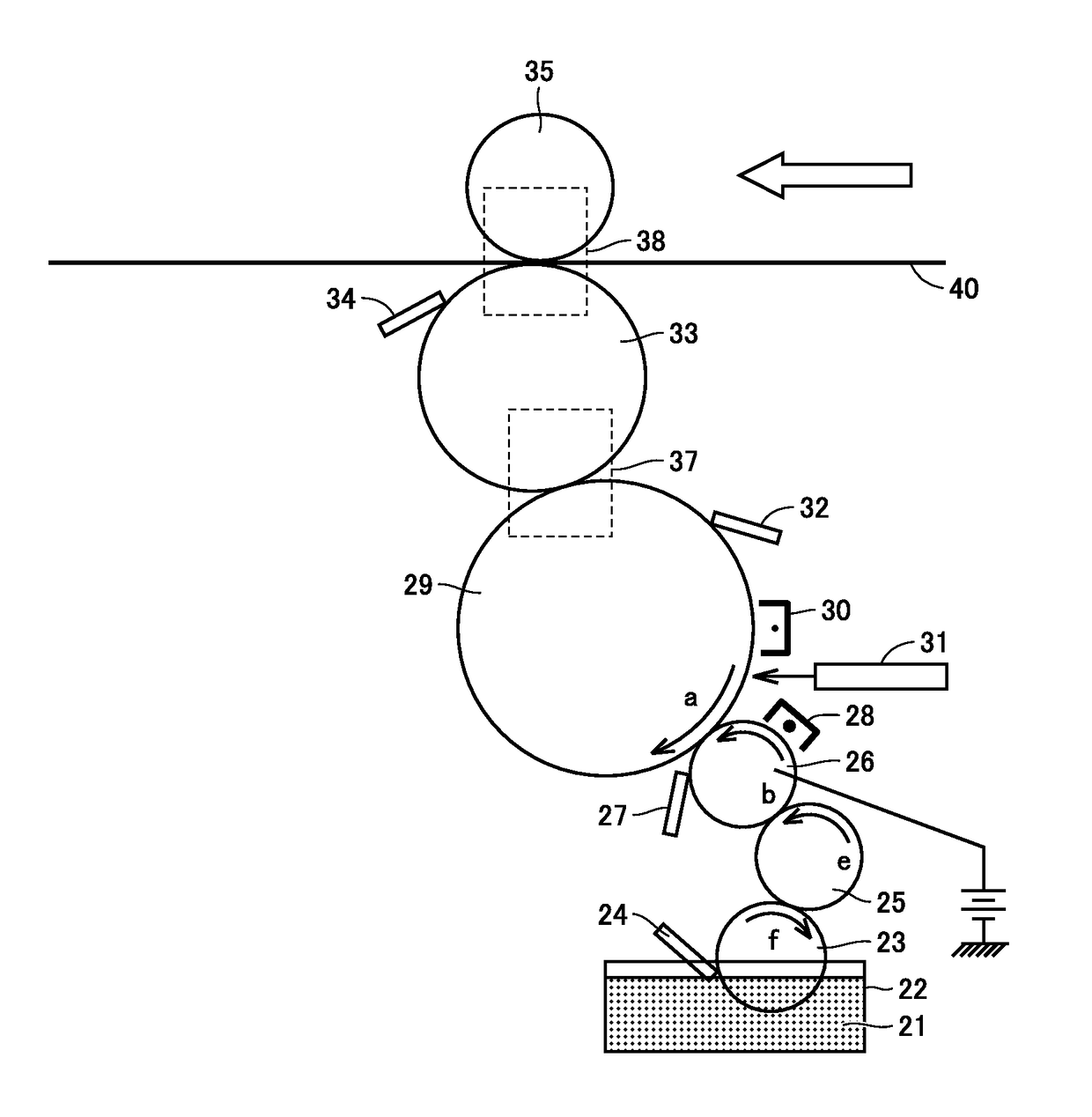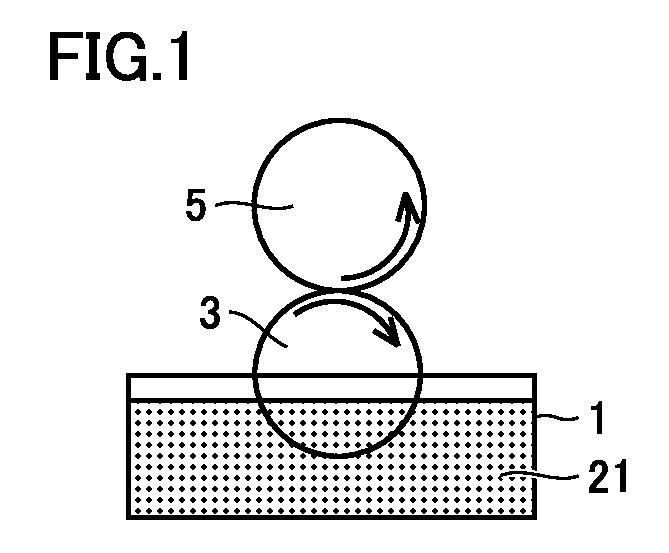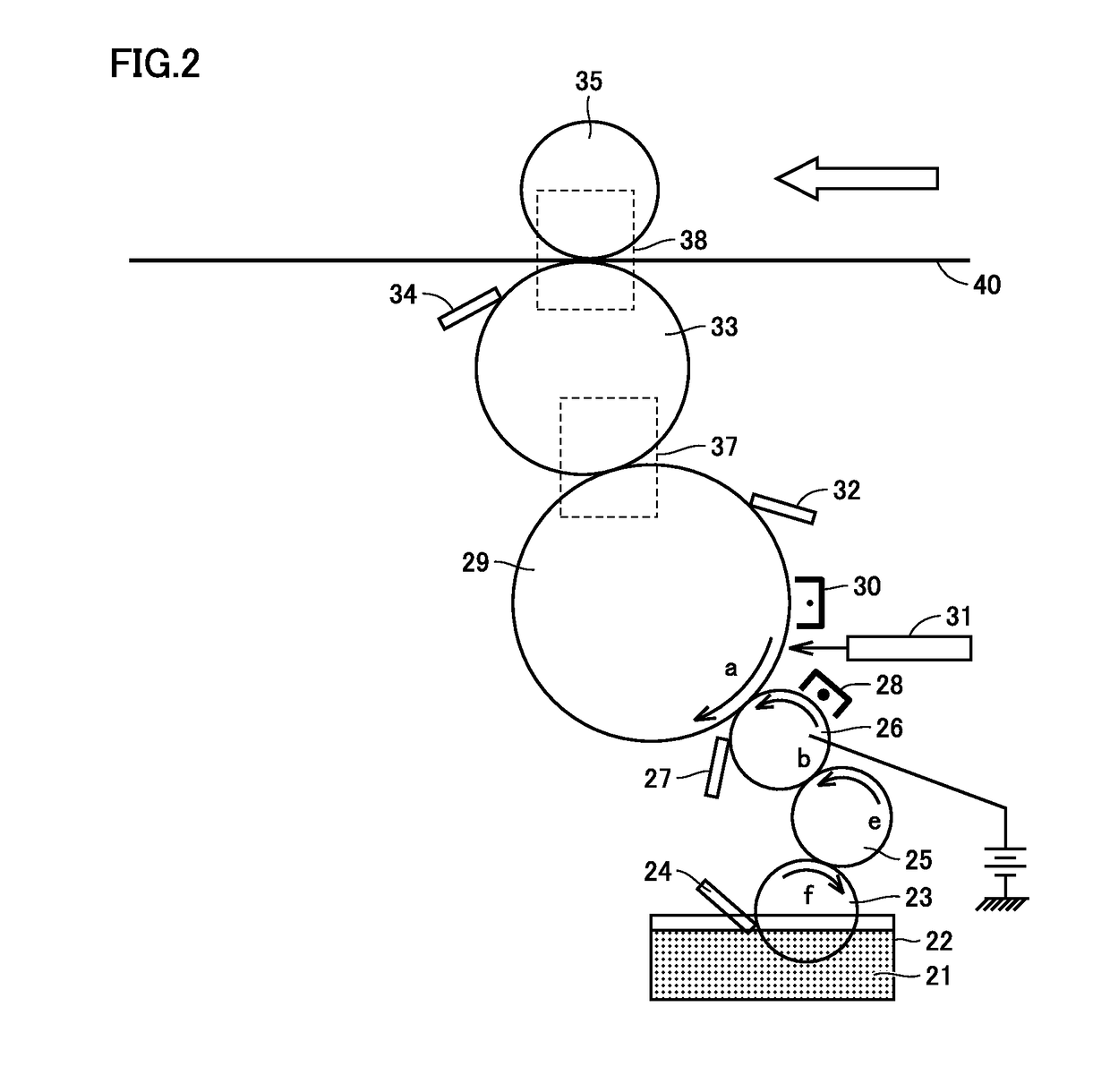Liquid developer
a liquid developer and developer technology, applied in the field of liquid developers, can solve the problems of reducing the heat aggregation of toner particles, and difficult to achieve the resistance of toner particles to heat at 50° c, so as to enhance the resistance to aggregation of toner particles, and improve the fixability of toner particles
- Summary
- Abstract
- Description
- Claims
- Application Information
AI Technical Summary
Benefits of technology
Problems solved by technology
Method used
Image
Examples
manufacturing example 1
Synthesis of Adduct of Propylene Oxide (PO) to Bisphenol A
[0092]In an autoclave provided with a stirring and temperature adjustment function, bisphenol A (228 g) and potassium hydroxide (2 g) were introduced and a temperature was raised to 135° C. Thereafter, propylene oxide (139 g) was introduced under a pressure condition from 0.1 to 0.4 MPa, and thereafter reaction was allowed for 3 hours. An adsorbent (trade name “Kyowaad® 600” manufactured by Kyowa Chemical Industry Co., Ltd.) (16 g) was introduced in the thus obtained reaction product, which was stirred and aged for 30 minutes while the temperature was held at 90° C. Thereafter, filtration was carried out to thereby obtain an adduct of propylene oxide to bisphenol A. This adduct of propylene oxide was a mixture of a compound in which the sum (m+n) of m and n in the chemical formula (I) was 2 and a compound in which the sum (m+n) of m and n in the chemical formula (I) was 3.
manufacturing example 2
Synthesis of Aliphatic Polyester Resins A to C
[0093]In a four-neck flask to which a stirring rod, a partial condenser, a nitrogen gas introduction pipe, and a thermometer were attached, 1,6-hexanediol (an aliphatic monomer, a constitutional unit derived from an alcohol component) and adipic acid (an aliphatic monomer, a constitutional unit derived from an acid component) were introduced (at a molar ratio of approximately 1:1). A nitrogen gas was introduced while stirring was carried out, and tetrabutoxytitanate was added as a polymerization catalyst for condensation polymerization for 5 hours at a temperature of approximately 170° C. To an obtained aliphatic polyester resin A, 0.2 mass % of tetrabutoxytitanate (a polymerization catalyst) was added.
[0094]Then, the temperature was lowered to approximately 100° C., and condensation polymerization was stopped by adding 0.012 part by mass of hydroquinone (a polymerization inhibitor) to 100 parts by mass of the product. Aliphatic polyeste...
manufacturing example 3
Synthesis of Aromatic Polyester Resins a and b
[0100]In a four-neck flask to which a stirring rod, a partial condenser, a nitrogen gas introduction pipe, and a thermometer were attached, the adduct of PO to bisphenol A (an aromatic monomer, a constitutional unit derived from an alcohol component) obtained in Manufacturing Example 1 and isophthalic acid (an aromatic monomer, a constitutional unit derived from an acid component) were introduced (at a molar ratio of approximately 1:1). A nitrogen gas was introduced while stirring was carried out, and tetrabutoxytitanate was added as a polymerization catalyst for condensation polymerization for 5 hours at a temperature of approximately 170° C. To an obtained aromatic polyester resin a, 0.2 mass % of tetrabutoxytitanate (a polymerization catalyst) was added.
[0101]Then, the temperature was lowered to approximately 100° C., and condensation polymerization was stopped by adding 0.012 part by mass of hydroquinone (a polymerization inhibitor) ...
PUM
 Login to View More
Login to View More Abstract
Description
Claims
Application Information
 Login to View More
Login to View More - R&D
- Intellectual Property
- Life Sciences
- Materials
- Tech Scout
- Unparalleled Data Quality
- Higher Quality Content
- 60% Fewer Hallucinations
Browse by: Latest US Patents, China's latest patents, Technical Efficacy Thesaurus, Application Domain, Technology Topic, Popular Technical Reports.
© 2025 PatSnap. All rights reserved.Legal|Privacy policy|Modern Slavery Act Transparency Statement|Sitemap|About US| Contact US: help@patsnap.com



